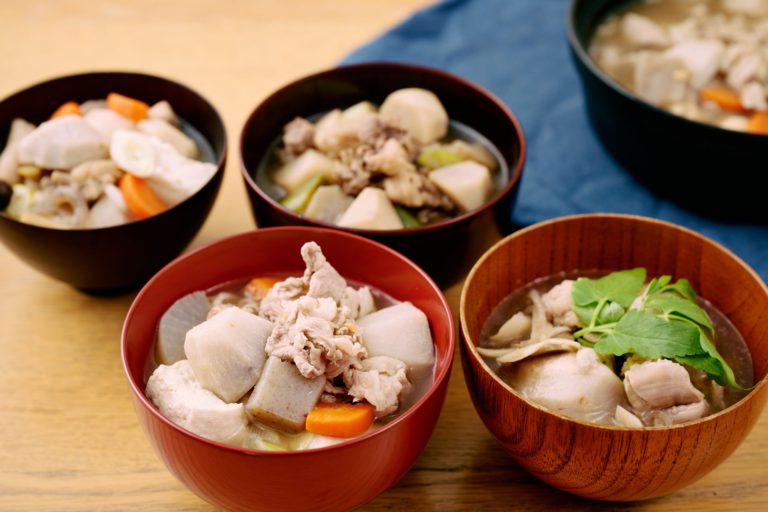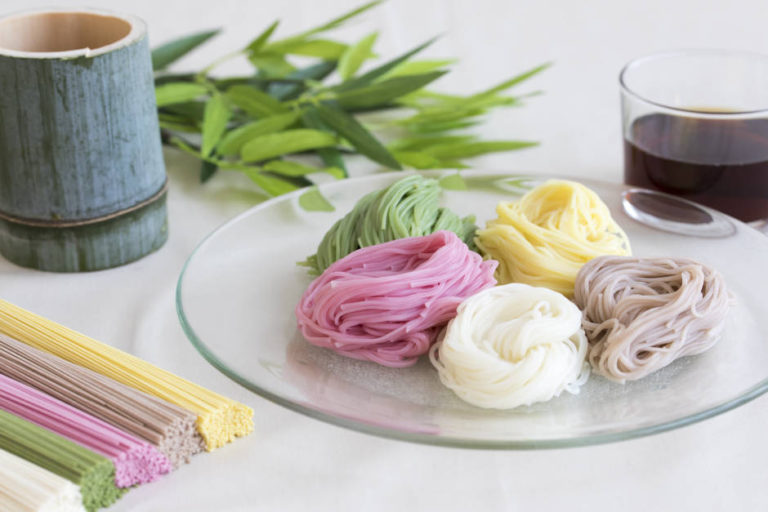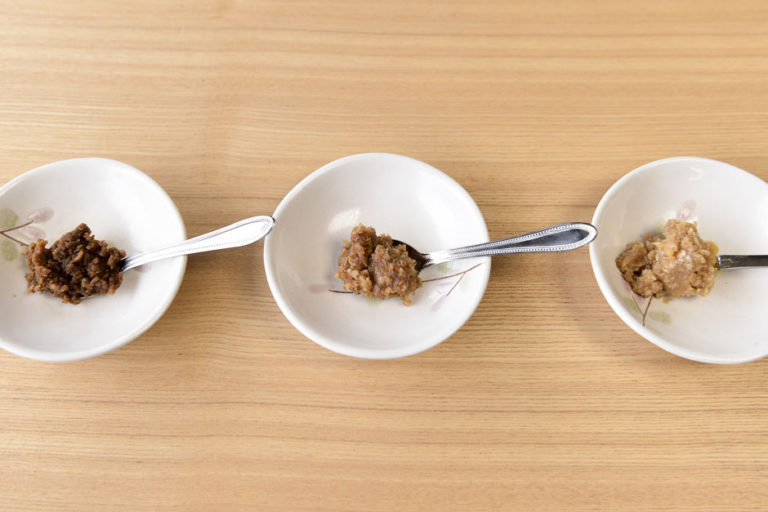Amakusa’s fruit of the sea. Tamaki Shoten’s Tsubu uni and Tawaki Fishery’s Shimaaji no Namahamu.
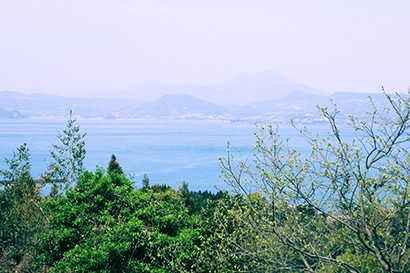
With the Ariake sea in the north, the Yatsushiro in the east, the East China sea in the west, the Amakusa archipalego, consisting of Ageshima and Kashima as its main islands, and Nagashima, Shishi Island, Goshoura and 1200 other islands of varying sizes, is surrounded by the open sea. It is lush with natural beauty, and was the historic landing point for Christian missionaries in the 17th century. Being surrounded by the seas of course makes it the perfect location for its rich fishing industry and is also known as the origin of Amakusa porcelain stone.
Tamaki Shoten's "Tsubu Uni"
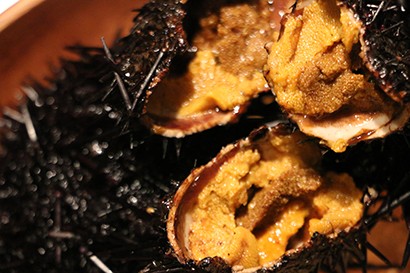
Following the lift of a ban in March, Amakusa’s began the fishing of murasaki uni. After the days of uneasy winter seas pass, the sakura, cherry blossom trees, begin to blossom. The sea urchin they harvest during this period is therefore called sakura uni.
The tsubu uni, a rare delicacy and variety of sakura uni, is harvested by the Tamaki family and sold at the Tamaki Shoten, just a stone’s throw from the center of Amakusa city. The store is reminiscent of the good old days of mid-century Japan and is the long standing commercial source of goods like tsubu uni and boiled sansho, Japanese peppers, which are original items specific to the Amakusa region.
We asked the Tamaki family about the secret behind Tsubu uni, the treasured item often considered the perfect gift for a special person.
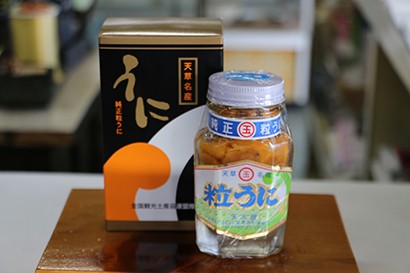
“Amakusa has a lot of sea urchin varieties such as kachi uni and aka uni, but we only use the Tomioka murasaki uni that is harvested around this time period.”
Amakusa’s representative sea urchin fisheries are Tomioka, Nie, and Ushibuka. Tomioka’s tsubu uni seems a perfect match for the Tamaki Shoten. Of course, any of them are delicious, but only Tomioka’s seems to have the exceptional, full-bodied after taste.
“When we tried to send our regulars the urchin from a different fishery, they actually became quite angry with us, saying the taste was completely different.”
Why would the taste differ so much for urchin from the same region?
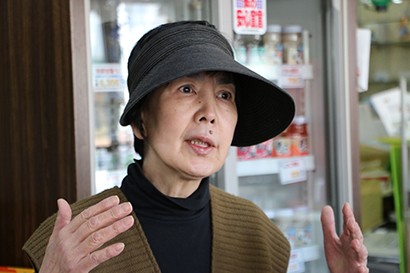
They say the reason lies in the sea. As we introduced to you before, the Amakusa archipalego is surrounded by sea. Among them, the Amakusa sea is considered the open sea, and Ariake and Yatsushiro are the inland seas. The flow of the current in the open seas often grows rough, whereas the inlets are calm. Even within the same area, the seaweed the urchins feed off of differ. Also, the urchin Tomioka harvests is increasingly scarce, such that you may not find them at any of the sushi counters or restaurants in town.
The Tamaki family skillfully prepares the tsubu uni by pickling it with their own special table salt, chiisana umi, but they never employ the use of additives in bringing a safe product to the tables of their patient customers.
Tawaki Fishery "Shimaaji no Namahamu"
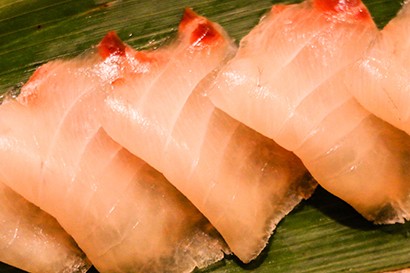
Amakusa’s natural blessings lie in its inlets, the Ariake and Yatsushiro, where a broad variety of fish come to spawn.
The red sea bream, yellow tail, tiger puffer, filefish, amberjack, and crustaceans take full advantage of this stable environment that is rich in minerals, making it perfect for cultivation.
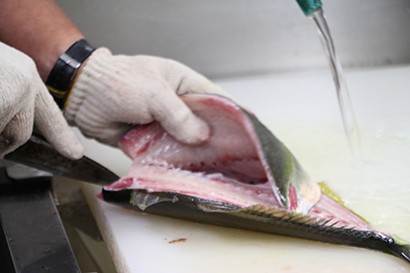
It is from this area that Tawaki Fishery gets its shimaaji no namahamu.
The meat from the shima-aji is scented with yuzu fruit and sliced as thin as prosciutto, which is why they call it namahamu, or “raw ham”.
The Tawaki family has been conducting business on this land for a generation, and after a lot of trial and error, finally arrived at this unique shima-aji dish. It is also said that the Nagasaki University’s Fishery Sciences department had a hand in developing this dish. Amakusa is technically a part of the Kumamoto, but is also adjoined to Nagasaki as well, and part of the Amakusa islands are in Nagasaki Prefecture. It was the joint effort of perfecture and community that created the shima-aji no namahamu.
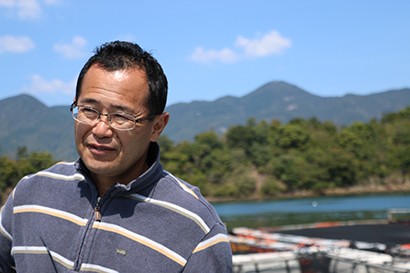
Tawaki Fishery raises fish from eggs to larval stages to juvenility, and finally to their adult phase. They even raise the plankton from the Amakusa sea that are fed to the fish, assuring that they are provided with sufficient sunlight for growth.
“The plankton raised in these seas are clearly the best for the fish,”
Mr. Tawaki tells us as we tour his small research facility that serves as a farm for fish in their juvenile stages, so we can get a peek at the devotion he commits to his work.
As a side-note, it is said that the process of cultivating fish, from egg to adult, was perfected first by Japan.
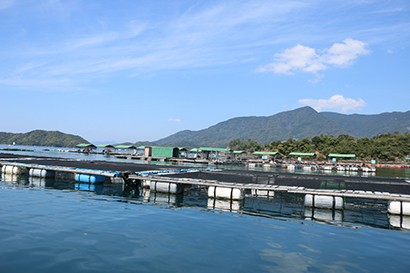
As spring comes, the water temperature in the Yatsushiro, and over 100 preserves that float in it, begins to rise. The carefully raised red sea bream, shima-aji, and tiger puffer swim happily in the sun-kissed waters.
The normal aji is about 8-11 inches long, but the shima-aji is 20-23 inches long, the largest reaching an impressive 3 feet long and is widely known as a high-grade fish. This valuable fish is brought from the sea to the table through the daily efforts of Mr. Tawaki, the instructors of Nagasaki university, as well as all of the fishermen.
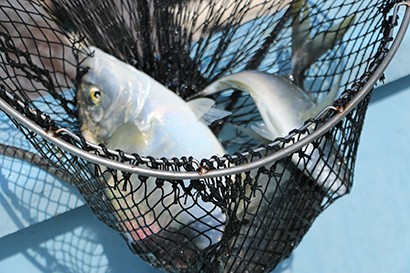
It was a long process to bring shimaaji no namahamu into creation. The fish most often used for this dish is the bream, but Mr. Tawaki decided there was not enough differentiation and sought the best fish for making prosciutto cuts. He found that the shima-aji was perfect for it. This fish is also great for sushi, but only lasts for a few days in that form. In an effort to get this tastey fish to more people as a raw ingredient, they developed this particular method of preparation. Normally to give prosciutto its fragrance you smoke it, but that would injure the natural flavor in this case, so instead they use small quantities of salt and pepper in the manufacturing process.
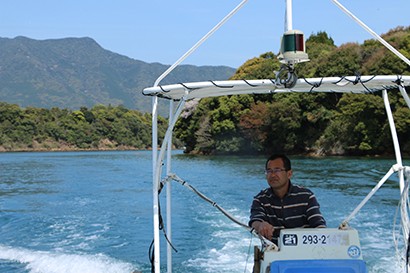
The fish are raised in a preserve from egg to adult, selected for quality, then used in production. Every shima-aji goes through this process to ensure freshness, and it is all conducted at Tawaki’s small factory, ajoining a small port in Amakusa.
This winter was more harsh than usual, so the temperature was late to rise this year. Shima-aji is originally a warm water fish. Low temperatures can affect the development of fat on the fish and damage the taste. When water temperature rises above 15C or 60F, they become more active, fatten up, and are far more delicious. Currently, it is just below 15C, and the shima-aji has just recently begun poking their heads up and swimming around. From here on is the prime season for shimaaji no namahamu.
Putting in time and effort, and creating a great taste you just can't get from mass production.
Tamaki Shoten’s tsubu uni and Tawaki fishery’s shimaaji no namahamu share something in common. They are both something you can not mass produce. They are a luxury that is born from nature and refined by hand-labor and raw materials daily for the customers who demand them that way.
This hard labor is exactly what makes tsubu uni and shimaaji no namahamu Japanese delicacies.

